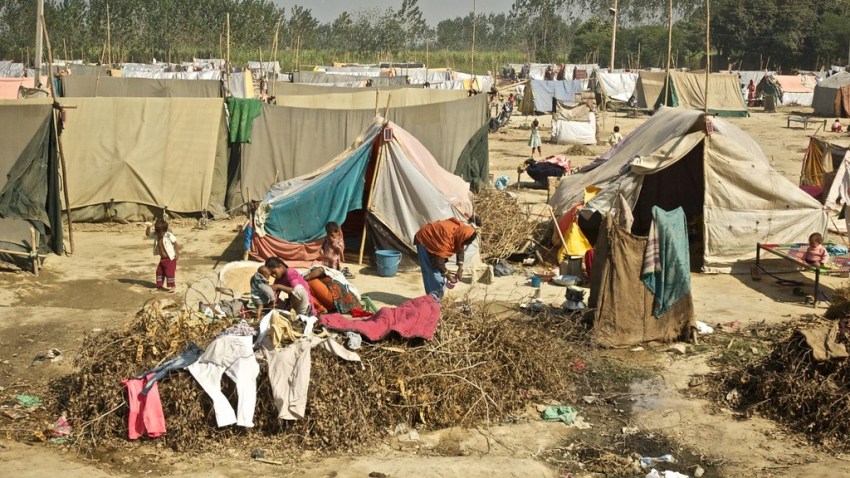Last month, the New York Times
documented the conditions of India’s relief camps for internally displaced people, some of which appear to be becoming permanent settlements. In an email interview,
Sanjib Baruah, a professor of political studies at Bard College, explained the causes of and responses to internal displacement in India.
WPR: Where are the major communities of internally displaced persons in India, and what caused their displacement?
Sanjib Baruah: IDPs in India are forced to leave their homes because of (a) ethnic and sectarian violence, and (b) armed conflicts or insurgencies. Recent incidents of ethnic and sectarian violence include the September 2013 clashes between Hindus and Muslims in the Muzaffarnagar district of Uttar Pradesh; multiple incidents of interethnic conflicts in Assam and other northeastern states, notably the clashes between Bodos and Bengali Muslims in Assam in the summer of 2012; and the anti-Muslim riots in Gujarat in 2002. The insurgency in Kashmir, now more than two decades old, has displaced large numbers of people, including at least 250,000 Kashmiri Pandits forced to flee the state in the 1990s. There have also been displacements in areas affected by the Naxalite or the Maoist movement in states like Chattisgarh, Andhra Pradesh and West Bengal. Civilians leave their homes not only because of Maoist violence, but also to escape the wrath of security forces and private militias that enjoy state patronage.
WPR: To what extent does the Indian government provide services to these communities?
Baruah: India is a federal polity and IDPs are primarily the responsibility of state governments. Nonprofit organizations and charities also provide services. But in India’s extremely competitive political climate it has sometimes been difficult to sustain political support for services to IDPs. The very public visibility of relief camps makes them controversial. For instance, major national politicians have visited the relief camps for IDPs from last year’s riots in Muzaffarnagar, probably with an eye to the upcoming national elections. However, the state’s ruling politicians view those visits as attempts to embarrass the Samajwadi Party for its failures—namely, to prevent the riots and to provide adequate relief to IDPs. This has led state government to rush to close down the camps even before the IDPs feel that conditions in their villages warrant their return. Some groups of IDPs are now trying to transform informal relief camps into permanent settlements.
WPR: What steps does the Indian government need to take over the longer term to facilitate IDPs' return home?
Baruah: Ultimately, what needs to be done is more than just facilitating the IDPs’ return home. India’s treatment of IDPs, and the country’s overall approach to IDPs leave much to be desired. While there is no compelling policy reason to make IDPs the responsibility of the central government, New Delhi can play a role in creating national norms. In a case involving some Kashmiri Pandits living in Delhi, a 2010 ruling by the Delhi High Court cited an international instrument, the 1998 Guiding Principles on Internal Displacement, to make the case for the government’s obligations vis-a-vis IDPs. It is possible to build on such precedents. It may be productive to work toward developing a domestic agreement on the lines of Africa’s Kampala Convention, which established binding obligations for African governments to protect and assist IDPs. The goal should be to eventually get all Indian states and union territories, as well as the central government, to sign such an agreement.

